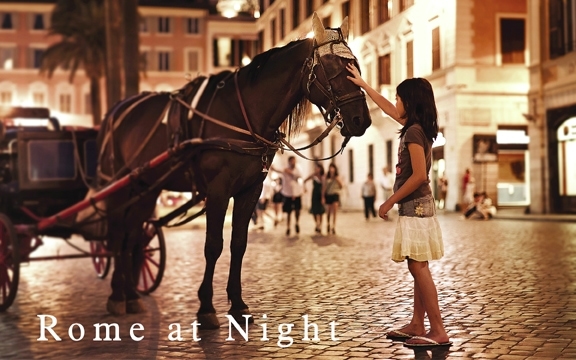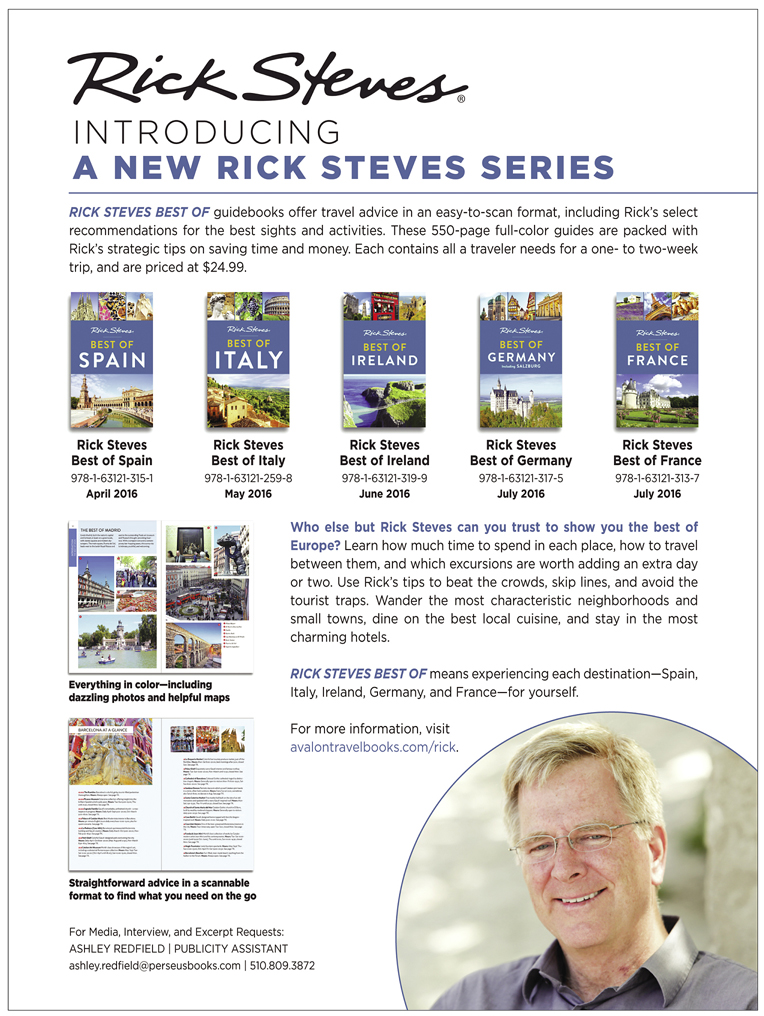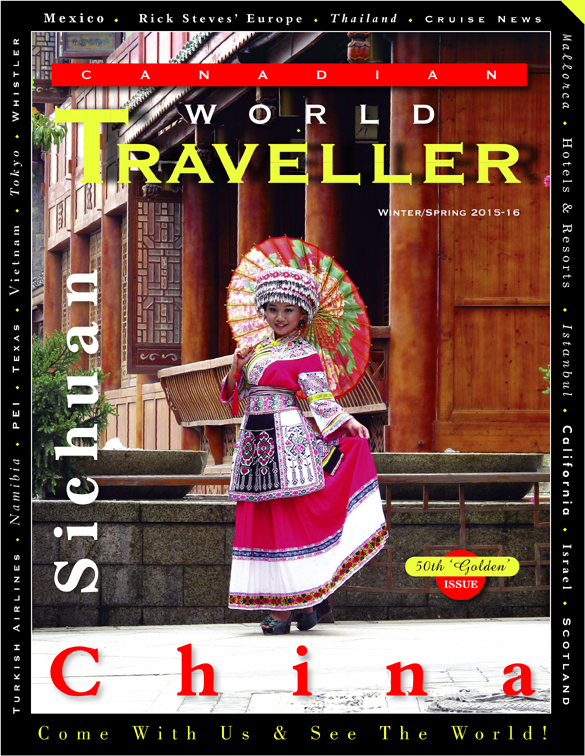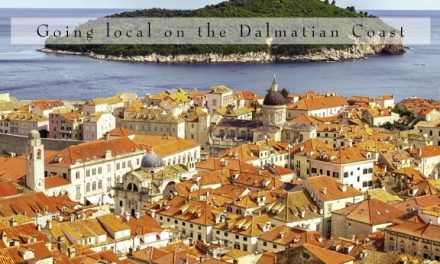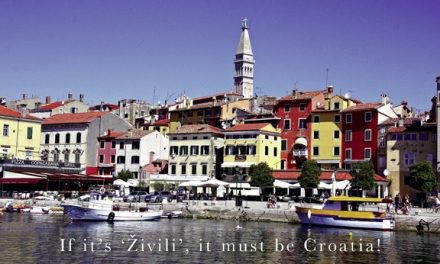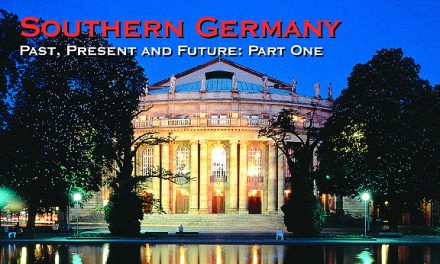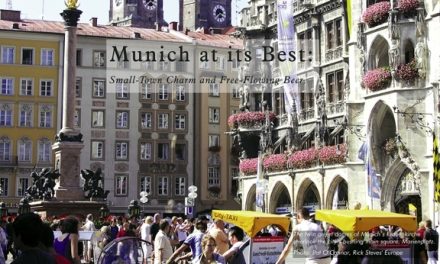Rick Steves’ Europe
Rome at Night
Article by Rick Steves, Photgraphy by Dominic Arizona Bonuccelli
In Rome, sunset brings unexpected magic. A stroll in the cool of the summer evening is made memorable by the romance of the Eternal City. The tourist who retreats at night to an air-conditioned hotel room is missing the best time to plunge into Rome. Once the museums close and the crowds thin, Rome relaxes. The city–so grand and monumental by day–becomes intimate and approachable.
On my Roman night walks, I like to sit so close to a bubbling fountain that traffic noise evaporates. In the evening, it’s fun to jostle with kids to see the gelato flavors or watch lovers straddling more than a bench. While strolling past polizia in flak-proof vests, I marvel at the ramshackle elegance that softens this brutal city for those who were born here–and can’t imagine living anywhere else. These are the flavors of Rome, best enjoyed after dark.
My favorite nighttime stroll, from Campo de’ Fiori to the Spanish Steps, mixes romance with history as it focuses on Rome’s floodlit nightspots and incomparable urban spaces.
Start your mile-long walk at the Campo de’ Fiori (Field of Flowers). At the center of the colorful square stands the statue of Giordano Bruno, the philosopher-priest who was burned at the stake on this spot in 1600 for advancing the radical notion that the earth revolved around the sun. (When the statue was erected in 1889, local riots overcame Vatican protests against honoring a heretic.) Today, Bruno overlooks a busy produce market in the morning and a gathering point for romantic strollers in the early-evening hours. This neighborhood is still known for its free spirit and occasional demonstrations. Late on weekend nights, the many bars lining the square are packed with beer-drinking kids, who turn a charming medieval square into one vast street party—more edgy than charming.
The next stop, Piazza Navona, offers an even more interesting night scene, with street music, artists, fire-eaters, local Casanovas, ice cream, Bernini fountains and outdoor cafés. The oblong square retains the shape of the original racetrack built here around A.D. 80 by the Emperor Domitian. It has been a center of Roman life since ancient times. The Four Rivers Fountain in the piazza’s center is the most famous fountain by Gian Lorenzo Bernini, the 17th-century sculptor who remade Rome in the Baroque style. Four burly river gods (representing the four continents known in 1650) support an Egyptian obelisk. Bernini enlivens the fountain with sculptures depicting horses plunging through rocks as well as the exotic flora and fauna from newly discovered lands.
From Piazza Navona, head for the Pantheon; sit for a while under the floodlit portico of this great temple to the gods of Rome, rebuilt by the Emperor Hadrian in A.D. 126. The pagan temple survived so well because it became a Christian church after Rome fell, saving it from scavenging locals who would have carted away its stones (as they routinely did with once-great, then abandoned ancient Roman buildings). The 40-foot granite columns of the Pantheon’s entrance, showing the scale on which the ancient Romans built, support a triangular Greek-style roof with an inscription stating that “M. Agrippa” constructed it. In fact, the roof was put in place by Hadrian, who credited the builder of an earlier structure. The impressive entranceway gives no clue that the greatest wonder of the Pantheon lies inside—a soaring domed space that inspired Michelangelo’s St. Peter’s and Brunelleschi’s Duomo, in Florence.
With your back to the Pantheon, walk uphill to the Piazza Capranica, home to the big, plain Florentine Renaissance–style Palazzo Capranica, and make your way to Piazza Colonna. A huge second-century column features reliefs depicting the victories of Emperor Marcus Aurelius over the barbarians. When Marcus Aurelius died in A.D. 180, the barbarians began to get the upper hand, commencing Rome’s three-century decline and fall.
Then follow Via del Corso, where horse races—without riders—took place during Carnevale until the late 1800s, when a series of fatal accidents (including, reportedly, one in front of Queen Margherita) led to the event’s cancellation. The street was once lined with butcher shops. When it became one of Rome’s first streets to be lit by gas in 1854, the shops were replaced by boutiques, jewelry stores and antiques dealers. Nowadays, most of Via del Corso, which is closed to traffic for a few hours every evening, becomes a parade of Romans taking the night air.
Next stop…the Trevi Fountain, of “Three Coins” fame. This watery Baroque avalanche, by Nicola Salvi, was completed in 1762. Salvi used the palace behind the fountain as a theatrical backdrop for his figure of Ocean, who represents water in every form. Water gushes from 24 spouts while Triton blows his conch shell.
The magic of the square is enhanced by the fact that no streets approach it directly. As you near the Trevi, you hear the splashing water and the crowds and then—bam!—you’re there. The scene is always lively. Romantics toss a coin over their shoulder to ensure their return to Rome. That may sound silly, but every year I go through this tourist ritual…and it seems to work.
Continue on to the Spanish Steps nearby. Piazza di Spagna, named for the Spanish Embassy to the Vatican, has been here for 300 years. It’s been the hangout of many Romantics—British poet John Keats, German composer Richard Wagner, German poet-philosopher Johann Wolfgang von Goethe—over the centuries. In the 1700s, British aristocrats on the Grand Tour came here to contemplate Rome’s decay. In 1821, Keats pondered his mortality, then died of tuberculosis at age 25 in the orange building to the right of the steps. (Fellow poet Lord Byron lived across the square at #66.) The Sinking Boat Fountain at the foot of the steps—built either by Bernini or his father, Pietro—is, like all of Rome’s fountains, powered by an aqueduct.
The piazza offers a thriving night scene. Window-shop along the elegant Via Condotti, which stretches away from the steps. Walking down a cobbled street, softly illuminated as if by torchlight, it’s easy to imagine I’m rubbing shoulders with the past.
In Rome, give me the night.
Rick Steves (www.ricksteves.com) writes European travel guidebooks and hosts travel shows on public television and public radio. Email him at rick@ricksteves.com and follow his blog on Facebook. © 2016 Rick Steves’ Europe. All rights reserved.
Click on cover to view published article

